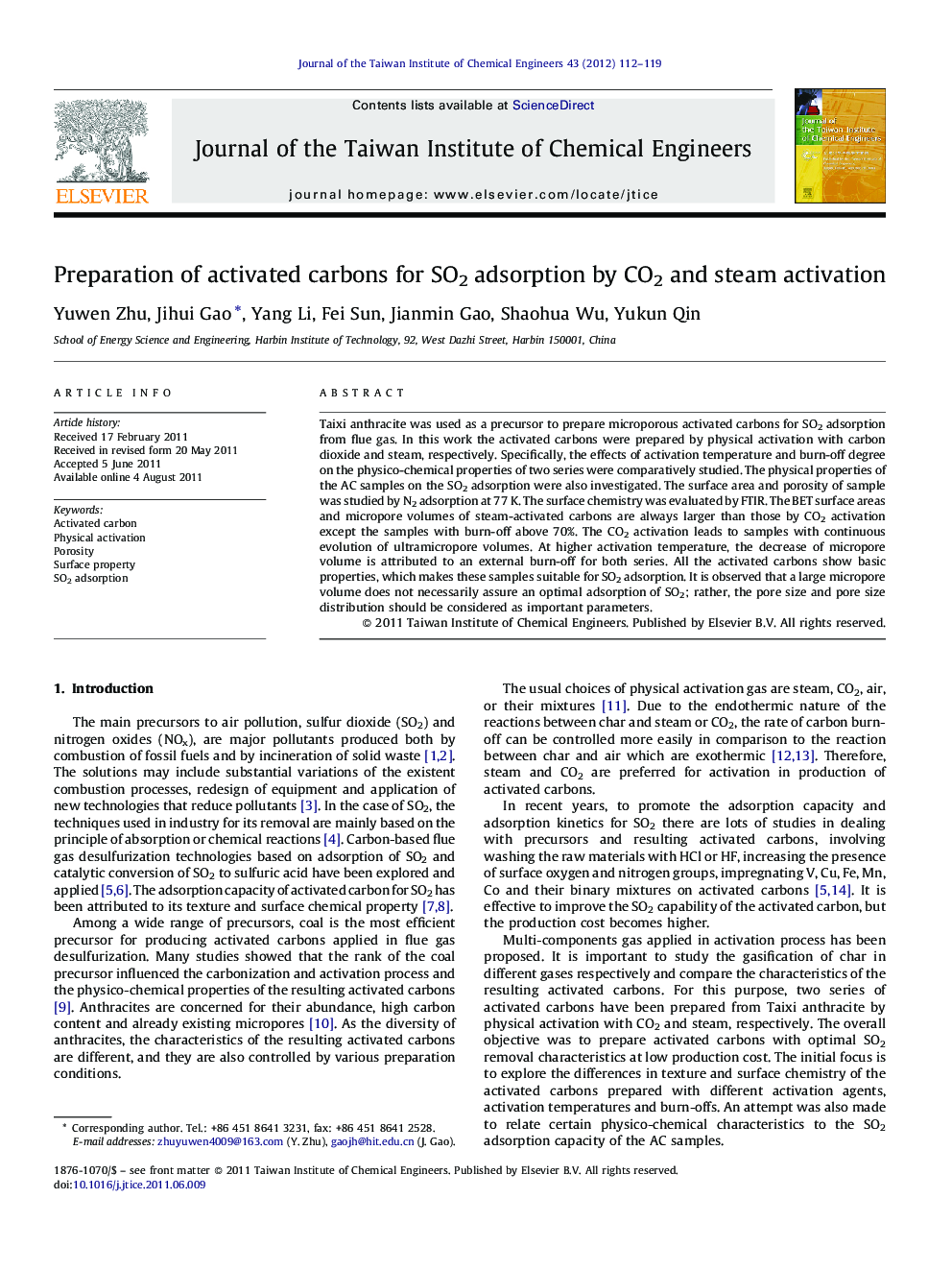| Article ID | Journal | Published Year | Pages | File Type |
|---|---|---|---|---|
| 691430 | Journal of the Taiwan Institute of Chemical Engineers | 2012 | 8 Pages |
Taixi anthracite was used as a precursor to prepare microporous activated carbons for SO2 adsorption from flue gas. In this work the activated carbons were prepared by physical activation with carbon dioxide and steam, respectively. Specifically, the effects of activation temperature and burn-off degree on the physico-chemical properties of two series were comparatively studied. The physical properties of the AC samples on the SO2 adsorption were also investigated. The surface area and porosity of sample was studied by N2 adsorption at 77 K. The surface chemistry was evaluated by FTIR. The BET surface areas and micropore volumes of steam-activated carbons are always larger than those by CO2 activation except the samples with burn-off above 70%. The CO2 activation leads to samples with continuous evolution of ultramicropore volumes. At higher activation temperature, the decrease of micropore volume is attributed to an external burn-off for both series. All the activated carbons show basic properties, which makes these samples suitable for SO2 adsorption. It is observed that a large micropore volume does not necessarily assure an optimal adsorption of SO2; rather, the pore size and pore size distribution should be considered as important parameters.
